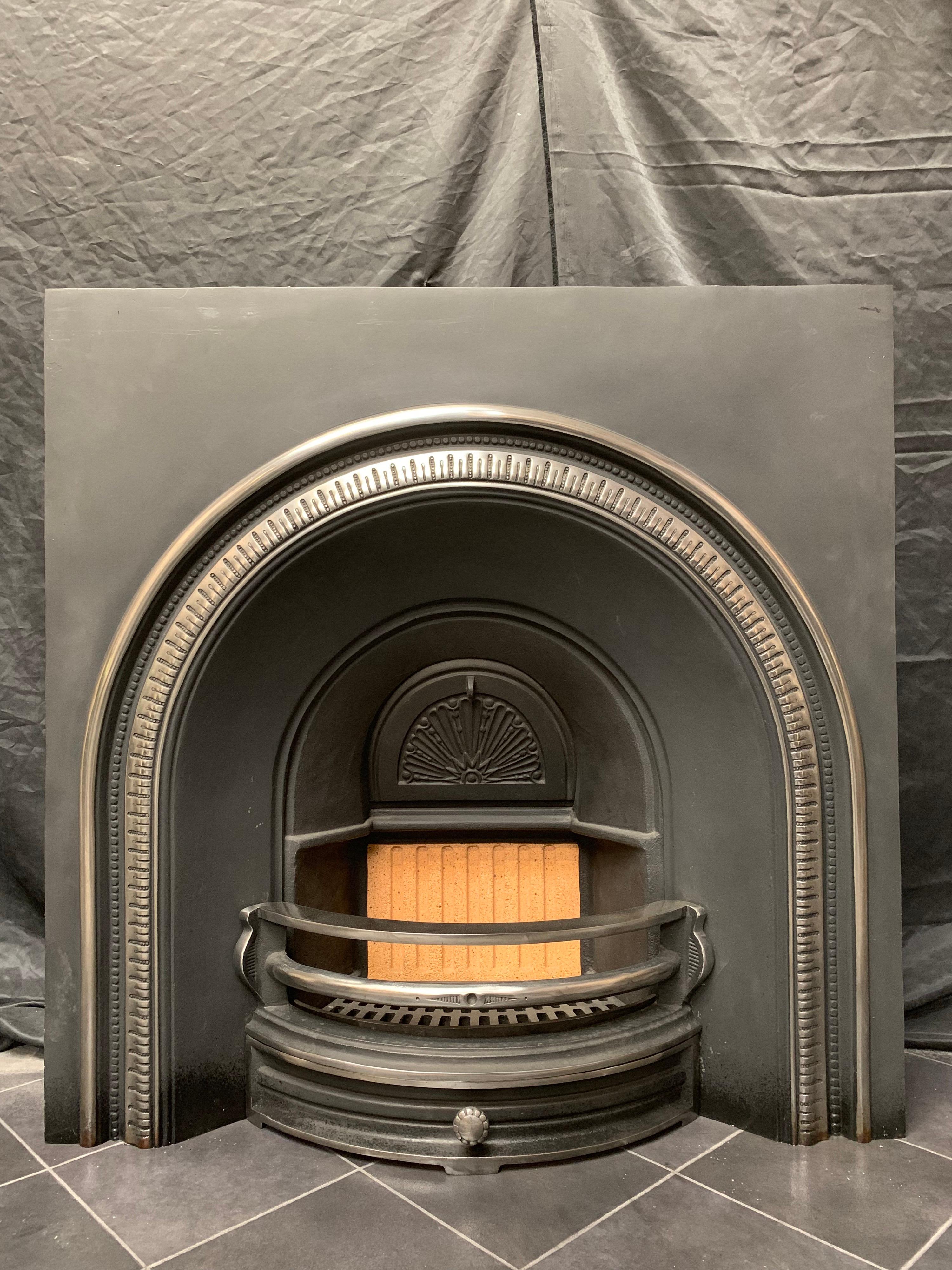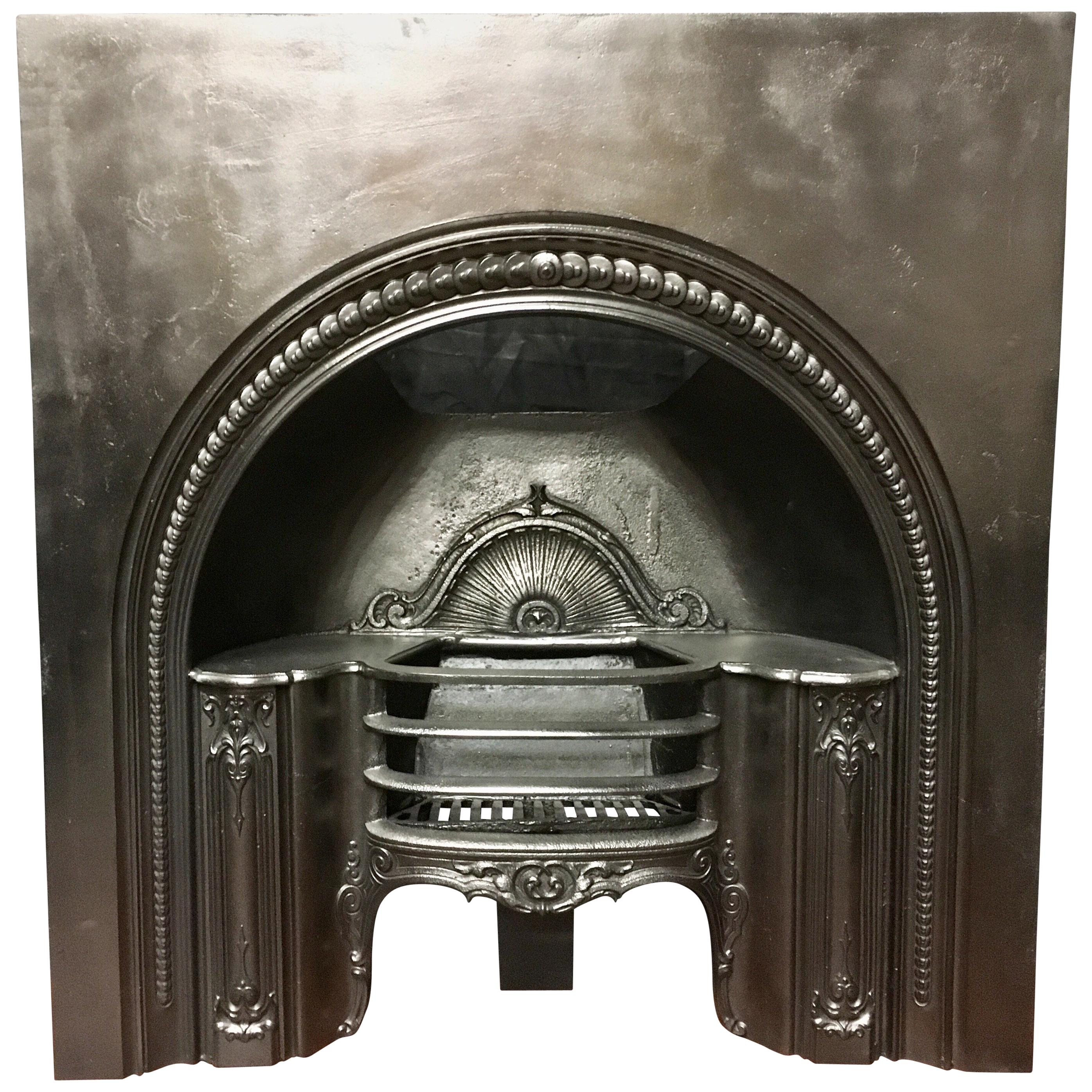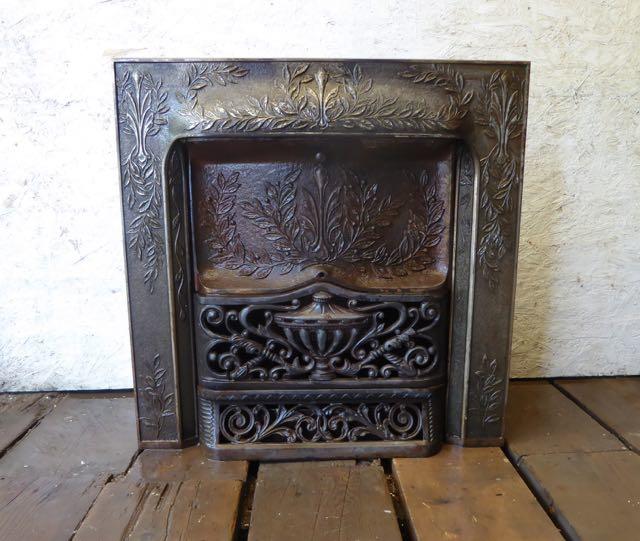Antique Iron Fireplace Insert
Antique iron fireplace inserts are more than just functional heating elements—they are pieces of history that bring charm and efficiency to any home. These inserts, often dating back to the 18th and 19th centuries, were designed to improve heat retention and reduce smoke in traditional fireplaces. Today, they are sought after by collectors and homeowners who appreciate their durability, craftsmanship, and aesthetic appeal. Whether used for heating or as a decorative focal point, antique iron fireplace inserts offer a unique blend of practicality and nostalgia.
The History of Antique Iron Fireplace Inserts
- Origins in the Industrial Revolution
Antique iron fireplace inserts became popular during the Industrial Revolution when cast iron manufacturing advanced. Before their invention, open fireplaces were inefficient, losing much of their heat. Iron inserts helped contain and radiate warmth more effectively, making them a revolutionary heating solution. - Victorian Era Craftsmanship
By the late 1800s, companies like Glenwood and Crawford produced ornate inserts with intricate designs. Victorian-era models often featured floral motifs, scrollwork, and detailed patterns, showcasing the era’s love for decorative ironwork. - Sand-Casting Techniques
Many antique inserts were made using sand casting, a method that allowed for detailed designs. This process involved pressing patterns into sand molds before pouring molten iron, resulting in unique and elaborate fireplace pieces. - Transition to Modern Heating
As central heating became widespread in the early 20th century, fireplace inserts lost popularity. However, their durability ensured many survived, making them prized antiques today. - Collectible Manufacturers
Brands like Home Sunshine and Jewel Stove Company were known for their high-quality inserts. Collectors often seek these specific makers due to their historical significance and craftsmanship. - Preservation of Historical Homes
Many antique inserts are still found in historic houses, where they remain functional or serve as decorative elements, preserving the authenticity of period homes.

Key Features of Antique Iron Fireplace Inserts
• Heavy-Duty Cast Iron Construction
These inserts were built to last, with thick cast iron that withstands high temperatures. The material’s heat retention properties make them more efficient than open fireplaces.
• Decorative Grilles and Panels
Many inserts feature ornate front grilles or side panels with intricate designs. These details were both functional (allowing airflow) and artistic, adding elegance to the fireplace.
• Adjustable Draft Controls
Older models often included manual draft controls, allowing users to regulate airflow for better combustion. This feature improved efficiency and reduced smoke.
• Ash Catchers and Removable Plates
Some inserts had built-in ash pans or removable plates for easy cleaning. This practical design made maintenance simpler compared to traditional fireplaces.
• Custom Sizing for Existing Fireplaces
Antique inserts were made in various sizes to fit different fireplace openings. Many were designed to be retrofitted into older hearths without major modifications.
• Patina and Aging Effects
Over time, cast iron develops a unique patina—some collectors prefer the original aged look, while others restore inserts to their former glory with refinishing.
Benefits of Using an Antique Iron Fireplace Insert
• Improved Heat Efficiency
Unlike open fireplaces that lose heat up the chimney, iron inserts radiate warmth into the room, making them far more efficient for heating spaces.
• Reduced Smoke and Draft Issues
The enclosed design minimizes drafts and directs smoke up the flue more effectively, creating a cleaner and more comfortable burning experience.
• Enhanced Fireplace Safety
With their solid iron construction, these inserts prevent sparks and embers from escaping, reducing the risk of accidental fires in the home.
• Aesthetic Appeal
Antique inserts add vintage charm to any fireplace, serving as a focal point in rustic, traditional, or even modern interiors.
• Eco-Friendly Heating Option
Burning wood in an efficient insert is more sustainable than relying on fossil fuels, making it an environmentally conscious choice for heating.
• Long-Term Durability
Cast iron is incredibly durable—many antique inserts remain functional after over a century, proving their longevity and value.
How to Identify and Authenticate Antique Inserts
• Look for Manufacturer Marks
Many inserts have stamped logos or patent dates from companies like Jewel or Glenwood. Researching these marks can help verify authenticity.
• Examine Construction Techniques
Hand-forged details, uneven casting seams, and older joinery methods indicate an antique piece rather than a modern reproduction.
• Check for Wear and Patina
Genuine antiques show natural aging, such as rust spots, pitting, or layers of old paint. Overly uniform finishes may suggest a replica.
• Assess Design Styles
Certain motifs (like Victorian scrollwork or Art Nouveau curves) can help date an insert to a specific era.
• Compare with Historical Catalogs
Old manufacturer catalogs or advertisements can help match an insert to its original design and production period.
• Consult with Restoration Experts
Professional antique dealers or fireplace restorers can provide insights into an insert’s age, rarity, and historical significance.
Maintaining and Restoring Antique Iron Fireplace Inserts
• Regular Cleaning to Prevent Rust
Gently remove ash and debris after each use. For decorative inserts, occasional dusting and waxing can preserve the finish.
• Replacing Cracked or Damaged Parts
Some inserts may need new grates or firebricks. Skilled metalworkers can fabricate replacements that match the original design.
• Stripping and Repainting
If restoring, use high-temperature paint after stripping old layers. Many originals were black, but some homeowners opt for custom colors.
• Lubricating Moving Components
Hinges and draft controls may require graphite lubrication to function smoothly without damaging the metal.
• Professional Refinishing for Severe Damage
For heavily rusted or warped inserts, professional sandblasting and resealing may be necessary to restore structural integrity.
• Safe Installation and Use
Before using a restored insert, ensure the chimney is clean and the flue is properly aligned to prevent smoke backup or fire hazards.
Antique Cast Iron Fireplace Insert – Legacy Vintage
Antique Cast Iron Arched Fireplace Insert
single 19th century antique american ornamental cast iron salvaged
fireplace insert
Architectural Salvage of South Hampton, NH. Antique
Related Posts:








